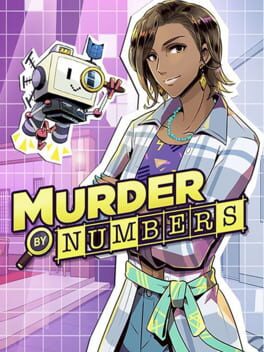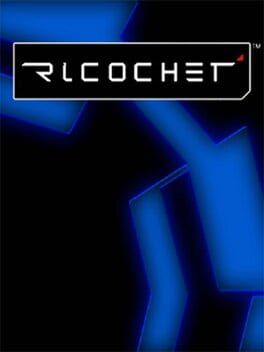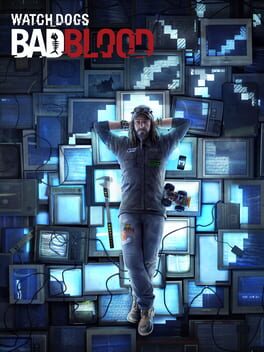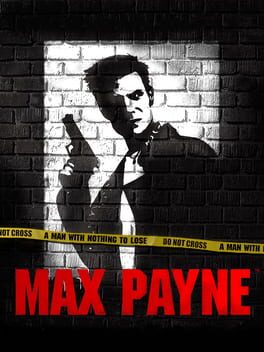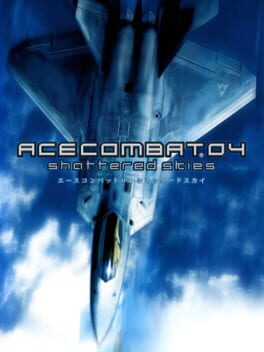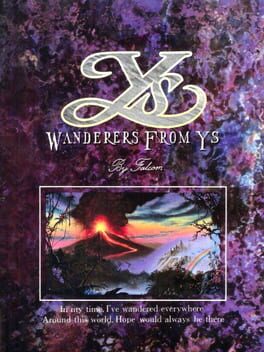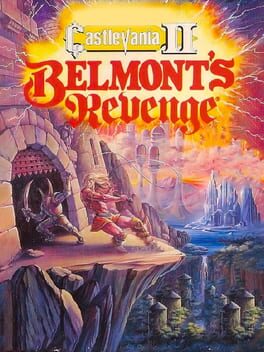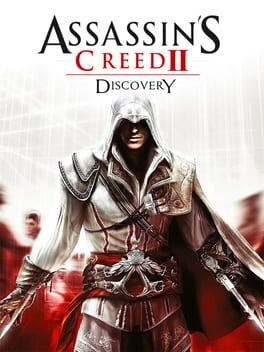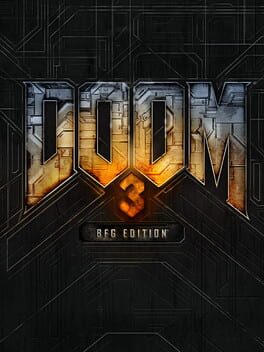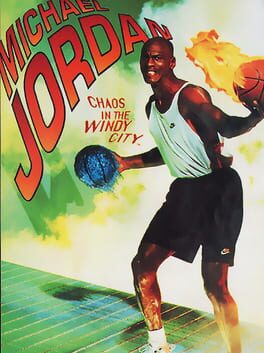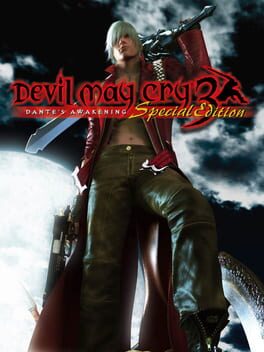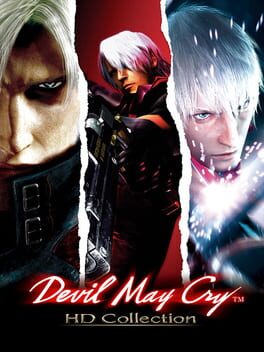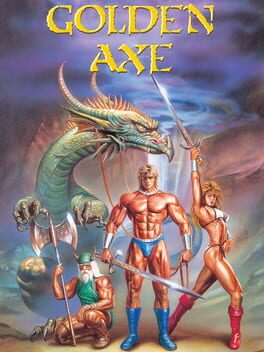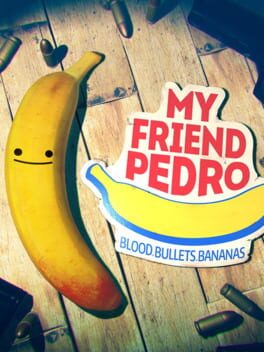Mattt
1985
Realised one day that I'd somehow never actually sat down and beat this iconic cornerstone that would define 2D platformers as we knew and continue to know them, so beat it I did.
Man, we've come a long way.
Super Mario Bros is a game I feel like I'm being a little harsh on, I was considering a 3* and done, but I feel like I do have to give a little leeway: this game meant a lot for the industry back then, and the fact a game that's approaching 40 years old is still as playable as it is to this day is surely a testament to its quality. However, under a modern lens it doesn't entirely withstand the test of time - to be expected, of course, but I do have to be somewhat impartial, at least.
The graphics are of course, violently simplistic. This was as early as early days got for NES (though it technically came out around 2 years into the Famicom's lifespan, so not so much there). The sprites are very basic and lack pretty much anything in the way of detail, all the more apparent when compared to its sequels such as Super Mario Bros 3. That said, the important thing is that the visuals still convey exactly what they're trying to, and it's rare you'll ever be led astray or confused by the graphics (and if you are, it's probably on purpose).
The level design is also very simple, but the developers were still able to work in a pretty decent amount of setpieces, such as the Lakitu, the Cheep-Cheeps soaring into the air, and the genuinely impressive labyrinth of the game's finale, Stage 8-4. Enemies are well varied and have easy to memorise patterns...except those damn Hammer Bros, where it feels like a gamble just getting around them, god forbid actually engaging them and their random streams of hammers. How many do they even have inside those TARDIS-ass shells of theirs?
The power ups are...well, bare-bones, a mushroom allows you to survive an extra hit while the fire flower gives you incredibly powerful projectiles as long as you can avoid damage - both make Mario a larger target and that can be absolutely lethal, but more on that in a bit. The other powerup is the Starman, which makes you invincible, and I have to say: thank you Nintendo, for having a clear indicator of when it's about to run out. It's a peeve of mine when invincibility can just suddenly end right as you run into danger, which is embarassing given that Nintendo wrote the book on that as far back as 85. No excuse, guys.
Where I have to seriously dock a point or two are the controls, though. I know, old game, but while the other factors don't pull this game down so much today, I think the controls do. Mario handles like a block of ice and makes manoeuvring, particularly in the air (which is where you'll be most of the time) awkward and inconsistent, and given a game over sends you right back to 1-1, it can make things very frustrating.
All in all, this is one of those games everyone with an interest in gaming history or even a general 2D platformer fan should play, but this is by no means a perfect game, and (almost) everything after it is quite rightly an improvement. You NEVER want to peak with your first installment.
Man, we've come a long way.
Super Mario Bros is a game I feel like I'm being a little harsh on, I was considering a 3* and done, but I feel like I do have to give a little leeway: this game meant a lot for the industry back then, and the fact a game that's approaching 40 years old is still as playable as it is to this day is surely a testament to its quality. However, under a modern lens it doesn't entirely withstand the test of time - to be expected, of course, but I do have to be somewhat impartial, at least.
The graphics are of course, violently simplistic. This was as early as early days got for NES (though it technically came out around 2 years into the Famicom's lifespan, so not so much there). The sprites are very basic and lack pretty much anything in the way of detail, all the more apparent when compared to its sequels such as Super Mario Bros 3. That said, the important thing is that the visuals still convey exactly what they're trying to, and it's rare you'll ever be led astray or confused by the graphics (and if you are, it's probably on purpose).
The level design is also very simple, but the developers were still able to work in a pretty decent amount of setpieces, such as the Lakitu, the Cheep-Cheeps soaring into the air, and the genuinely impressive labyrinth of the game's finale, Stage 8-4. Enemies are well varied and have easy to memorise patterns...except those damn Hammer Bros, where it feels like a gamble just getting around them, god forbid actually engaging them and their random streams of hammers. How many do they even have inside those TARDIS-ass shells of theirs?
The power ups are...well, bare-bones, a mushroom allows you to survive an extra hit while the fire flower gives you incredibly powerful projectiles as long as you can avoid damage - both make Mario a larger target and that can be absolutely lethal, but more on that in a bit. The other powerup is the Starman, which makes you invincible, and I have to say: thank you Nintendo, for having a clear indicator of when it's about to run out. It's a peeve of mine when invincibility can just suddenly end right as you run into danger, which is embarassing given that Nintendo wrote the book on that as far back as 85. No excuse, guys.
Where I have to seriously dock a point or two are the controls, though. I know, old game, but while the other factors don't pull this game down so much today, I think the controls do. Mario handles like a block of ice and makes manoeuvring, particularly in the air (which is where you'll be most of the time) awkward and inconsistent, and given a game over sends you right back to 1-1, it can make things very frustrating.
All in all, this is one of those games everyone with an interest in gaming history or even a general 2D platformer fan should play, but this is by no means a perfect game, and (almost) everything after it is quite rightly an improvement. You NEVER want to peak with your first installment.
2020
A decent puzzler with a story that gets off to a seriously rocky start, finds its groove, but ultimately outstays its welcome. Also made by the developers of Fall Guys, against all possible odds.
As a lover of picross, and enjoyer of the occasional visual novel, this game sure seemed like it was calling to me - I mean, the picross alone is enough to entice me. Sadly, I'm left pretty underwhelmed, as while the puzzles were fine, they start off very easy, with no form of adjustable difficulty - if you're a picross pro, the earlygame will put you to sleep. If you're a picross beginner, you'd better be taking notes as the game goes on or the final chapter will kick your brain's ass.
There are hints, but using any hints beyond the indicator that points you in the right direction will lock you out of some of the bonus puzzles that you get from getting a high enough grade on a chapter. Solving puzzles get you points to increase your grade, and your reward are extra story bits - but miss a puzzle in a chapter or use hints, and you get less points, thus locking you out of it. And if you do screw up? You have to restart the whole chapter again.
Come to think of it, this game is just sort of unpolished in general. The hint system that doesn't deduct points works fine, but turning it back off screws up the way the numbers grey out to tell you what you've filled in, which can be very disorientating. I've also heard of bugs regarding loading save files, and bugs preventing dialogue progressing, even full on softlocks: seriously not a good thing to have. There is an autosave, but still.
The story itself is endearing, but gets off to what I consider to be a very bad first chapter. Characters are introduced with incredibly stereotypical and unlikable personalities; K.C. in particular has no character beyond being British, and being gay. He actually does get proper writing in later chapters, but that's more than can be said for other characters, such as Becky, who...is just generally toxic, narcissistic and awful. Characters come and go throughout at the drop of a hat, abruptly cutting off their arcs and leaving them behind without any form of closure, as the story gets increasingly sidetracked.
Honor and Scout are an entertaining and likable pair of protagonists, though Honor maybe relies too heavily on Scout for basic problem-solving. Her own lifestyle issues dominate the first half of the game, in a way that's sympathetic if a little overbearing. The second half of the game puts the ball into Scout's court, but given Scout is just a quirky funny robot, it's more about the mystery surrounding his origins, which I find to be satisfactory, but at the cost of a lot of other character writing that gets left behind.
The game also can't pick a tone; people getting murdered is, of course, terrible and awful upon the initial discovery - now shut up everyone and blast one of the like, 3 or 4 puzzle solving tracks that are all super happy and upbeat and WILL get stuck in your head. Also, lots of wisecracking for someone right next to a dead body. I get that this is Ace Attorney inspired, but the balance of comedy to seriousness was not matched.
All in all the game is fine, but disappointing and I would only recommend it if you really like picross, as it certainly does pic the ross. Some of the laughs land, but the jokes such as the games low budget (the unpacked boxes joke got REALLY OLD) don't, and the story both starts and ends poorly.
As a lover of picross, and enjoyer of the occasional visual novel, this game sure seemed like it was calling to me - I mean, the picross alone is enough to entice me. Sadly, I'm left pretty underwhelmed, as while the puzzles were fine, they start off very easy, with no form of adjustable difficulty - if you're a picross pro, the earlygame will put you to sleep. If you're a picross beginner, you'd better be taking notes as the game goes on or the final chapter will kick your brain's ass.
There are hints, but using any hints beyond the indicator that points you in the right direction will lock you out of some of the bonus puzzles that you get from getting a high enough grade on a chapter. Solving puzzles get you points to increase your grade, and your reward are extra story bits - but miss a puzzle in a chapter or use hints, and you get less points, thus locking you out of it. And if you do screw up? You have to restart the whole chapter again.
Come to think of it, this game is just sort of unpolished in general. The hint system that doesn't deduct points works fine, but turning it back off screws up the way the numbers grey out to tell you what you've filled in, which can be very disorientating. I've also heard of bugs regarding loading save files, and bugs preventing dialogue progressing, even full on softlocks: seriously not a good thing to have. There is an autosave, but still.
The story itself is endearing, but gets off to what I consider to be a very bad first chapter. Characters are introduced with incredibly stereotypical and unlikable personalities; K.C. in particular has no character beyond being British, and being gay. He actually does get proper writing in later chapters, but that's more than can be said for other characters, such as Becky, who...is just generally toxic, narcissistic and awful. Characters come and go throughout at the drop of a hat, abruptly cutting off their arcs and leaving them behind without any form of closure, as the story gets increasingly sidetracked.
Honor and Scout are an entertaining and likable pair of protagonists, though Honor maybe relies too heavily on Scout for basic problem-solving. Her own lifestyle issues dominate the first half of the game, in a way that's sympathetic if a little overbearing. The second half of the game puts the ball into Scout's court, but given Scout is just a quirky funny robot, it's more about the mystery surrounding his origins, which I find to be satisfactory, but at the cost of a lot of other character writing that gets left behind.
The game also can't pick a tone; people getting murdered is, of course, terrible and awful upon the initial discovery - now shut up everyone and blast one of the like, 3 or 4 puzzle solving tracks that are all super happy and upbeat and WILL get stuck in your head. Also, lots of wisecracking for someone right next to a dead body. I get that this is Ace Attorney inspired, but the balance of comedy to seriousness was not matched.
All in all the game is fine, but disappointing and I would only recommend it if you really like picross, as it certainly does pic the ross. Some of the laughs land, but the jokes such as the games low budget (the unpacked boxes joke got REALLY OLD) don't, and the story both starts and ends poorly.
2000
A DLC that definitely surpasses the base game in almost every way...but it's still Watch Dogs, so that does limit how good it can actually be.
T-Bone is a far more charismatic protagonist than Aiden could ever hope to be, and the way the story ties into his backstory while wrapping up a handful of loose ends is good stuff. The side content also somehow held my interest, being more difficult remixes of the side missions in the base game - but far less rewarding in my opinion for attempting to do them all. For one, you can't. For two, it's only achievements once you've done 15 missions per faction, which is just content for padding's sake - but that is the core foundation of Ubisoft's design mantra, so who am I to complain?
Me. I'm me and I'm complaining.
But overall, very fun mini-campaign and makes me wish the whole game was more like this. Lighthearted banter to dispel a serious story goes a long way.
T-Bone is a far more charismatic protagonist than Aiden could ever hope to be, and the way the story ties into his backstory while wrapping up a handful of loose ends is good stuff. The side content also somehow held my interest, being more difficult remixes of the side missions in the base game - but far less rewarding in my opinion for attempting to do them all. For one, you can't. For two, it's only achievements once you've done 15 missions per faction, which is just content for padding's sake - but that is the core foundation of Ubisoft's design mantra, so who am I to complain?
Me. I'm me and I'm complaining.
But overall, very fun mini-campaign and makes me wish the whole game was more like this. Lighthearted banter to dispel a serious story goes a long way.
2001
Over 20 years later and ahead of a remake, this game remains a flawed masterpiece. A metaphor-laden script that oozes pure noir, those instantly recognisable and slightly uncanny comic-book cutscenes, and the implementation of the "bullet-time" effect, lifted straight from the Matrix but none the less impressive for it. All of these elements left me repeatedly wondering how the hell this game is as old as I am.
The controls are smooth enough to allow amazing precision control, particularly during the slow motion bullet-time mechanic, but just limited enough so that you're still in serious danger in every firefight. The game has a somewhat notorious bug where the adaptive difficulty doesn't take into account loading quicksaves, so not far in you'll be given enemies with quick reaction times and dealing higher damage. It can be incredibly difficult, but the ability to quicksave at any point means it's just a matter of immediately giving it another shot. You even get two slots just in case you hit the button right as a suit with a shotgun opens a door next to you...
If I had to pick flaws, it'd be the story. Not that it's bad story, even if it doesn't really establish any character other than Max himself. As the story is from his perspective, and given that said perspective is total apathy towards anything other than his objective, this could be interpreted as staying true to that, but it still leaves some frustratingly unanswered questions.
The other issue is that I think the game overstays its welcome by about a chapter or two, which left me greatly fatigued towards the endpoint - though the quality of the final act was enough to fire my synapses right back up. I could also take the opportunity to complain how much of a bitch this game is to run on modern PCs...you have to install a fan-made fixpack for even the bare essentials like audio, and not immediately crashing; even then, issues remain such as minor graphical bugs, stuttering, and the occasional random freezing. And yet despite suffering through all that, I think this game was worth it by far. A true testament to its quality.
All in all, don't wait for the remakes, get this game in its original state now...if you still can, as Rockstar have already delisted it in a few regions as far as I can tell. Also, avoid the console ports if possible, they make a lot of compromises from what I hear.
The controls are smooth enough to allow amazing precision control, particularly during the slow motion bullet-time mechanic, but just limited enough so that you're still in serious danger in every firefight. The game has a somewhat notorious bug where the adaptive difficulty doesn't take into account loading quicksaves, so not far in you'll be given enemies with quick reaction times and dealing higher damage. It can be incredibly difficult, but the ability to quicksave at any point means it's just a matter of immediately giving it another shot. You even get two slots just in case you hit the button right as a suit with a shotgun opens a door next to you...
If I had to pick flaws, it'd be the story. Not that it's bad story, even if it doesn't really establish any character other than Max himself. As the story is from his perspective, and given that said perspective is total apathy towards anything other than his objective, this could be interpreted as staying true to that, but it still leaves some frustratingly unanswered questions.
The other issue is that I think the game overstays its welcome by about a chapter or two, which left me greatly fatigued towards the endpoint - though the quality of the final act was enough to fire my synapses right back up. I could also take the opportunity to complain how much of a bitch this game is to run on modern PCs...you have to install a fan-made fixpack for even the bare essentials like audio, and not immediately crashing; even then, issues remain such as minor graphical bugs, stuttering, and the occasional random freezing. And yet despite suffering through all that, I think this game was worth it by far. A true testament to its quality.
All in all, don't wait for the remakes, get this game in its original state now...if you still can, as Rockstar have already delisted it in a few regions as far as I can tell. Also, avoid the console ports if possible, they make a lot of compromises from what I hear.
I wanted to enjoy this so much that I bought it twice - first one failed to read past a certain mission due to barely visible scratches, and the second had absolutely scuffed audio but let me finish the damn game. The lengths I will go for the anime plane games...
An absolutely solid entry in the long running flight simulator franchise that is held back by obvious budgetary issues and a lack of ambition that leaves it feeling like little more than an echo of the PS1 entries.
Let's have a little context: Ace Combat 1(or "Air Combat", as it was localised) was a rough, but fun, early release for the PS1. It struggled to rise above other contemporary flight sims such as Warhawk, but was enough to sell and review well, and is altogether a fun time. Ace Combat 2 would then show up and utterly blow it, and all competition, out of the air. Big graphical improvements, branching paths, the hidden Aces in most levels, the escalating scale of the missions, it was amazing. Ace Combat 3 - the proper, Japanese version and not the butchered localisation - was a radical departure that wasn't as mechanically sound as 2, but in its place offered an incredible 50+ missions and full anime cutscenes, with an absolutely ridiculous and over-the-top sci-fi story to boot.
Which is why Ace Combat 4, the first entry on PS2, sadly feels like a bit of an awkward "greatest hits" album, but it's only the barest essence of each game. The game is structured more like 2 - mission briefings from a commander, perhaps a short cutscene or two demonstrating the target, and then just pure action - but also takes a leaf out of 3 with a deeper, more personal story with anime stylings in-between missions - but only in single frames with narration. It's obvious there was a massive budget slash after the ambitious Ace Combat 3 failed to sell very well, and it kinda shows all too often.
The mission design in particular suffers here. As with 3, you have a timer, but this time it's a fixed limit that always counts down, as opposed to counting up with you not getting the best mission outcome if it goes on for too long. Here, it's always counting down, meaning you no longer have the freedom to engage targets at your leisure. It adds some degree of difficulty and realism, but I find it a lot less enjoyable as a result. Furthermore, these missions are only very rarely a case of eliminating specific targets in the time limit - almost all of them are about scoring a set number of points within the time limit.
Here's the fatal flaw: when you have objectives like this, and missions that can go up to 20 minutes in length, PLUS undisclosed secondary objectives that appear in certain missions after the time runs out, and then not have any checkpoints....it can be soul-crushing when you get wiped out during your second objective, only to have to repeat the dull 20-minute ground assault all over again just to get another shot at it.
This lacking mission design never really goes away throughout - the only standout missions are one where you engage an absolute ton of fighters at once, in what is pretty impressive for an early PS2 title, and the final mission. It's a decent finale, but sadly undermined by being a far less exciting version of one of AC2's last few missions. Another thing: the hidden Aces of Ace Combat 2 are implemented, but ONLY if you play on New Game Plus. What the hell? That really should've just been in the missions from the beginning, it's called Ace Combat after all, sheesh.
All in all, I can appreciate Shattered Skies for going back to the more familiar beats of Ace Combat 2, but beyond the story there's not much it does to rise above it like it should. Far too many ground assaults, unspectacular scenery, and a soundtrack that, while excellent, I can't appreciate the same way due to how it was mixed versus the constant plane noises and radio chatter. Very cool and immersive radio chatter, but shush, please, I can't hear these beats.
I do think this game is good, but if you can handle the older visuals I think I'd recommend Ace Combat 2 or 3 over this one. But hey, if you play this one first, you probably won't feel the disappointment I had, so that might actually be the better choice!
An absolutely solid entry in the long running flight simulator franchise that is held back by obvious budgetary issues and a lack of ambition that leaves it feeling like little more than an echo of the PS1 entries.
Let's have a little context: Ace Combat 1(or "Air Combat", as it was localised) was a rough, but fun, early release for the PS1. It struggled to rise above other contemporary flight sims such as Warhawk, but was enough to sell and review well, and is altogether a fun time. Ace Combat 2 would then show up and utterly blow it, and all competition, out of the air. Big graphical improvements, branching paths, the hidden Aces in most levels, the escalating scale of the missions, it was amazing. Ace Combat 3 - the proper, Japanese version and not the butchered localisation - was a radical departure that wasn't as mechanically sound as 2, but in its place offered an incredible 50+ missions and full anime cutscenes, with an absolutely ridiculous and over-the-top sci-fi story to boot.
Which is why Ace Combat 4, the first entry on PS2, sadly feels like a bit of an awkward "greatest hits" album, but it's only the barest essence of each game. The game is structured more like 2 - mission briefings from a commander, perhaps a short cutscene or two demonstrating the target, and then just pure action - but also takes a leaf out of 3 with a deeper, more personal story with anime stylings in-between missions - but only in single frames with narration. It's obvious there was a massive budget slash after the ambitious Ace Combat 3 failed to sell very well, and it kinda shows all too often.
The mission design in particular suffers here. As with 3, you have a timer, but this time it's a fixed limit that always counts down, as opposed to counting up with you not getting the best mission outcome if it goes on for too long. Here, it's always counting down, meaning you no longer have the freedom to engage targets at your leisure. It adds some degree of difficulty and realism, but I find it a lot less enjoyable as a result. Furthermore, these missions are only very rarely a case of eliminating specific targets in the time limit - almost all of them are about scoring a set number of points within the time limit.
Here's the fatal flaw: when you have objectives like this, and missions that can go up to 20 minutes in length, PLUS undisclosed secondary objectives that appear in certain missions after the time runs out, and then not have any checkpoints....it can be soul-crushing when you get wiped out during your second objective, only to have to repeat the dull 20-minute ground assault all over again just to get another shot at it.
This lacking mission design never really goes away throughout - the only standout missions are one where you engage an absolute ton of fighters at once, in what is pretty impressive for an early PS2 title, and the final mission. It's a decent finale, but sadly undermined by being a far less exciting version of one of AC2's last few missions. Another thing: the hidden Aces of Ace Combat 2 are implemented, but ONLY if you play on New Game Plus. What the hell? That really should've just been in the missions from the beginning, it's called Ace Combat after all, sheesh.
All in all, I can appreciate Shattered Skies for going back to the more familiar beats of Ace Combat 2, but beyond the story there's not much it does to rise above it like it should. Far too many ground assaults, unspectacular scenery, and a soundtrack that, while excellent, I can't appreciate the same way due to how it was mixed versus the constant plane noises and radio chatter. Very cool and immersive radio chatter, but shush, please, I can't hear these beats.
I do think this game is good, but if you can handle the older visuals I think I'd recommend Ace Combat 2 or 3 over this one. But hey, if you play this one first, you probably won't feel the disappointment I had, so that might actually be the better choice!
Ys III has somewhat of an identity crisis; it's following in the footsteps of Zelda by making their second instalment (if we count 1 and 2 as one combined game, as originally intended) a 2D side scroller, and trying to squash the system from 1 and 2 into this new setting. However, the execution leaves a lot to be desired.
To the games credit, the presentation is on point. Graphics are pleasant (though suffer from a bit of a lack of vibrancy) with some very nice parallax scrolling, and the music is about the level you'd come to expect from Falcom's sound team: kick-ass. And considering this is a port, it converts to the Mega Drive's sound chip surprisingly well, far better than the SNES ports music did. The translation is a bit spotty, with odd wording and weird typos, but it's still cohesive.
As for the gameplay...it's now a side scrolling hack n' slash dungeon crawler. No overworld, just a friendly town and a map leading to the various dungeons you unlock throughout the story (of which there are only about 5 areas, some containing multiple dungeons). The sword-swishing isn't great early on, as your effective range is so short that enemies can actually reach and hurt you between attacks, even if you hold the button down. This improves as you upgrade gear, but as with 1 and 2, the earlygame is brutal. You can easily die just trying to grind to level 2, and you'll need to.
That's the critical flaw for me, actually: the difficulty spikes. Early on, you'll be mincemeat if you're not at least level 3, which requires a lot of tedious grinding of the same 2 basic enemies. As the game goes on, it becomes a pattern: Enter dungeon, get beaten up immediately, cautiously grind until the next level, get through dungeon ok, reach boss, get destroyed, grind again to next level, try boss again, kick boss' ass. Repeat. The sheer difference in difficulty for most boss fights with just a single level of difference feels poorly balanced.
There's also a ring system thrown in, where you can obtain several rings through your adventure and equip them for certain effects. In the older games these would just be passive bonuses and stayed at that, but now they consume a meter called ring power. Ring power can go up to 255, and goes up by a measly *1 point for each enemy killed. Each ring drains ring power at a rate of at least* 1 per second, so you can only use these sparingly for tough sections or bosses. While interesting in theory, it's just not given enough room to develop beyond just using the power ring for bosses, the healing ring for when you're about to die and already used your herb (Adol can carry 5 entire sets of armor but not more than one damn herb), and the time ring for BS enemy patterns in the endgame.
It's also a short experience, clocking in at just 6 hours - perhaps merciful, as a good portion of that is grinding. The story is nothing to write home about and in my opinion, doesn't come close to the heights of the first two games' stories and lore, which this almost completely ignores in favour of essentially starting anew.
Despite my criticisms, it remains fairly playable, and the excellent music will help alleviate some of the boredom of grinding. It's not the worst action RPG around, but it sure isn't a gem.
To the games credit, the presentation is on point. Graphics are pleasant (though suffer from a bit of a lack of vibrancy) with some very nice parallax scrolling, and the music is about the level you'd come to expect from Falcom's sound team: kick-ass. And considering this is a port, it converts to the Mega Drive's sound chip surprisingly well, far better than the SNES ports music did. The translation is a bit spotty, with odd wording and weird typos, but it's still cohesive.
As for the gameplay...it's now a side scrolling hack n' slash dungeon crawler. No overworld, just a friendly town and a map leading to the various dungeons you unlock throughout the story (of which there are only about 5 areas, some containing multiple dungeons). The sword-swishing isn't great early on, as your effective range is so short that enemies can actually reach and hurt you between attacks, even if you hold the button down. This improves as you upgrade gear, but as with 1 and 2, the earlygame is brutal. You can easily die just trying to grind to level 2, and you'll need to.
That's the critical flaw for me, actually: the difficulty spikes. Early on, you'll be mincemeat if you're not at least level 3, which requires a lot of tedious grinding of the same 2 basic enemies. As the game goes on, it becomes a pattern: Enter dungeon, get beaten up immediately, cautiously grind until the next level, get through dungeon ok, reach boss, get destroyed, grind again to next level, try boss again, kick boss' ass. Repeat. The sheer difference in difficulty for most boss fights with just a single level of difference feels poorly balanced.
There's also a ring system thrown in, where you can obtain several rings through your adventure and equip them for certain effects. In the older games these would just be passive bonuses and stayed at that, but now they consume a meter called ring power. Ring power can go up to 255, and goes up by a measly *1 point for each enemy killed. Each ring drains ring power at a rate of at least* 1 per second, so you can only use these sparingly for tough sections or bosses. While interesting in theory, it's just not given enough room to develop beyond just using the power ring for bosses, the healing ring for when you're about to die and already used your herb (Adol can carry 5 entire sets of armor but not more than one damn herb), and the time ring for BS enemy patterns in the endgame.
It's also a short experience, clocking in at just 6 hours - perhaps merciful, as a good portion of that is grinding. The story is nothing to write home about and in my opinion, doesn't come close to the heights of the first two games' stories and lore, which this almost completely ignores in favour of essentially starting anew.
Despite my criticisms, it remains fairly playable, and the excellent music will help alleviate some of the boredom of grinding. It's not the worst action RPG around, but it sure isn't a gem.
A substantial upgrade to the first game and honestly a pretty good game as far as the Game Boy goes, all the terrible performance and jank of Castlevania: The Adventure is gone and in it's place is simply the regular Castlevania jank we've come to love.
Most importantly, sub-weapons appear, though there are only 2 - on Game Boy, it's the Axe and the Holy Water, whereas the JP and Game Boy Color versions have the incredibly awesome Cross. I was stuck with the cross-less version, which made things a lot harder as the bosses do not screw around this time.
Before storming Dracula's castle, you get to go through 4 levels in any order you wish, Mega Man style, although the lack of any permanent upgrade means it's solely preference without any actual strategy to it. Levels have certain theming and there are a pretty decent range of enemies on offer considering the limited cartridge space. While most enemies no longer remove your whip upgrades upon hitting you, one enemy type - the Punaguchi - can do so with their bouncing projectiles, which can be fiendishly placed.
Overall, a challenging experience and a bit of an underwhelming final boss whose pattern is entirely unpredictable until you die to it a ton, but otherwise a great action platformer that still sits in the shadow of its NES brethren.
Most importantly, sub-weapons appear, though there are only 2 - on Game Boy, it's the Axe and the Holy Water, whereas the JP and Game Boy Color versions have the incredibly awesome Cross. I was stuck with the cross-less version, which made things a lot harder as the bosses do not screw around this time.
Before storming Dracula's castle, you get to go through 4 levels in any order you wish, Mega Man style, although the lack of any permanent upgrade means it's solely preference without any actual strategy to it. Levels have certain theming and there are a pretty decent range of enemies on offer considering the limited cartridge space. While most enemies no longer remove your whip upgrades upon hitting you, one enemy type - the Punaguchi - can do so with their bouncing projectiles, which can be fiendishly placed.
Overall, a challenging experience and a bit of an underwhelming final boss whose pattern is entirely unpredictable until you die to it a ton, but otherwise a great action platformer that still sits in the shadow of its NES brethren.
A buggy mess that, while mechanically sound for the most part, is designed in an inane manner that entirely works against these mechanics, resulting in nothing but total frustration. The plot is acceptable (by the low standards of Assassin's Creeds boring storytelling) but the gameplay is just dire. Avoid unless you really want to consume every last drop of Ezio content there is.
2012
Survival horror? In MY DOOM??
Doom 3; by far and away the most controversial Doom entry, it earned the ire of the fanbase by daring to diverge from what defined Doom in the 90s, and what defines it today thanks to the rebooted series. Rather than being asked to "rip and tear", you spend a large chunk of the game in tight, cramped corridors, hoping you're not the one being ripped and torn by demons spawning directly behind you.
And honestly, I think the first 4 or so hours are just absolutely dire and mundane. It aspires to be almost a Deus-Ex lite, talking to NPCs, reading logs and emails to find passwords hidden away that can get you into lockers, or doors. Unfortunately, your silent protagonist never feels like a part of the world you're being asked to care so much about by the writers, and instead it just feels like revision for an exam moreso than worldbuilding. The dull, repetitive corridors make for poor fighting arenas too, and the early enemies are incredibly bothersome to fight with the screen-shake you receive from being shot by their hitscan bullets.
However, as you hit about halfway in, something kinda magical happens. Doom 3, as far as the Doom timeline goes, is a bit up in the air - timeline wise, it can't fit into the universe, but ignoring the finer details, it makes the most sense to think of it as a prequel to the franchise. But in my opinion, it's a little more meta than that.
Think about it - the corridors start to get replaced more and more with larger, more open areas to manoeuvre. More familiar demons appear, the hellish imagery becomes stronger, your arsenal expands, and the story becomes less in-the-way. This isn't a prequel to Doom's story, but in a way it's very gameplay. I know I sound completely insane, but I think that's what actually playing Doom 3 just does to a person.
Unintentional meta-ness aside, it's easy to see why Doom 3 is the way it is; it's the same reason Link tried side scrolling that one time, or why Simon Belmont tried talking to townspeople in an open world that one time. Developers sometimes have to try mixing their sequels up so as not to get diminishing returns as people complain about "more of the same". This may sound ironic when talking about Doom, but it was that very thing that caused the decline of the series in the late 90s. This wasn't just meant to be another Doom, but a game that was meant to seize the PC gaming market entirely as a technical achievement, while capitalising on current trends, and it did so brilliantly - even if that stops it from holding up nearly as well.
The BFG edition does make certain changes to Doom 3, and not entirely for the better, but I think I'd have more fun with this version than the original, personally. Not to mention, you also get access to both the original expansion pack, Resurrection of Evil, and an entirely new one, as well as the original Ultimate Doom and Doom 2....though, why you'd play these somewhat butchered versions (nightmare mode nerfed, censorship) over the new Unity ports or fan ports these days is anyone's guess.
All in all, Doom 3 starts poorly, but actually really shines in it's second half, and is worth at least giving a try.
Doom 3; by far and away the most controversial Doom entry, it earned the ire of the fanbase by daring to diverge from what defined Doom in the 90s, and what defines it today thanks to the rebooted series. Rather than being asked to "rip and tear", you spend a large chunk of the game in tight, cramped corridors, hoping you're not the one being ripped and torn by demons spawning directly behind you.
And honestly, I think the first 4 or so hours are just absolutely dire and mundane. It aspires to be almost a Deus-Ex lite, talking to NPCs, reading logs and emails to find passwords hidden away that can get you into lockers, or doors. Unfortunately, your silent protagonist never feels like a part of the world you're being asked to care so much about by the writers, and instead it just feels like revision for an exam moreso than worldbuilding. The dull, repetitive corridors make for poor fighting arenas too, and the early enemies are incredibly bothersome to fight with the screen-shake you receive from being shot by their hitscan bullets.
However, as you hit about halfway in, something kinda magical happens. Doom 3, as far as the Doom timeline goes, is a bit up in the air - timeline wise, it can't fit into the universe, but ignoring the finer details, it makes the most sense to think of it as a prequel to the franchise. But in my opinion, it's a little more meta than that.
Think about it - the corridors start to get replaced more and more with larger, more open areas to manoeuvre. More familiar demons appear, the hellish imagery becomes stronger, your arsenal expands, and the story becomes less in-the-way. This isn't a prequel to Doom's story, but in a way it's very gameplay. I know I sound completely insane, but I think that's what actually playing Doom 3 just does to a person.
Unintentional meta-ness aside, it's easy to see why Doom 3 is the way it is; it's the same reason Link tried side scrolling that one time, or why Simon Belmont tried talking to townspeople in an open world that one time. Developers sometimes have to try mixing their sequels up so as not to get diminishing returns as people complain about "more of the same". This may sound ironic when talking about Doom, but it was that very thing that caused the decline of the series in the late 90s. This wasn't just meant to be another Doom, but a game that was meant to seize the PC gaming market entirely as a technical achievement, while capitalising on current trends, and it did so brilliantly - even if that stops it from holding up nearly as well.
The BFG edition does make certain changes to Doom 3, and not entirely for the better, but I think I'd have more fun with this version than the original, personally. Not to mention, you also get access to both the original expansion pack, Resurrection of Evil, and an entirely new one, as well as the original Ultimate Doom and Doom 2....though, why you'd play these somewhat butchered versions (nightmare mode nerfed, censorship) over the new Unity ports or fan ports these days is anyone's guess.
All in all, Doom 3 starts poorly, but actually really shines in it's second half, and is worth at least giving a try.
A solid package of the first three Devil May Cry games, but very much just polished ports with very little in the way of remastering or improvements. Indeed, a lot of graphical elements (mainly in 1) are completely broken, and pre-rendered cutscenes remain in their horribly pixelated, low-res glory.
Most importantly though, the games run well, and play excellently. This is especially useful if you were in Europe and were cursed with the horrendous PAL conversion of DMC1 on the PS2 - gone is the letterboxing and reduced game speed, just smooth 60FPS action.
Of course, the contents aren't all great. The gallery is nice, 1 is dated but remains playable, and 3 is just fantastic. But then there's 2, a despicable heap of garbage that is best avoided, it adds nothing of value to the franchise.
It's also maybe a little overpriced considering this, so it's best grabbed on a sale, but there's a lot of fun to be had in this package.
Most importantly though, the games run well, and play excellently. This is especially useful if you were in Europe and were cursed with the horrendous PAL conversion of DMC1 on the PS2 - gone is the letterboxing and reduced game speed, just smooth 60FPS action.
Of course, the contents aren't all great. The gallery is nice, 1 is dated but remains playable, and 3 is just fantastic. But then there's 2, a despicable heap of garbage that is best avoided, it adds nothing of value to the franchise.
It's also maybe a little overpriced considering this, so it's best grabbed on a sale, but there's a lot of fun to be had in this package.
1989
2019
A very short, snappy run 'n gun that, while high on spectacle, veers harshly off-course towards the end as it tries to warp itself into that of a precision platformer, which pushes the already shaky controls to their limit and really lets the whole experience down. Only recommended on a deep sale, or as part of Game Pass (which it is available for on PC as of the time of writing).

